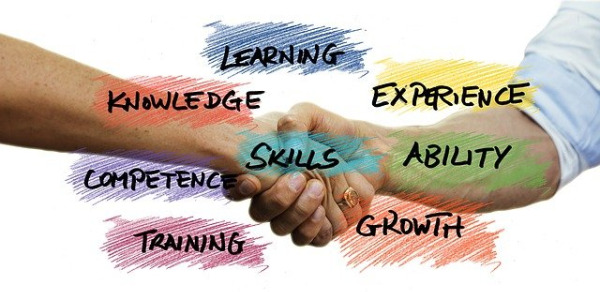Soft Skills and the Reset on Employer Degree Requirements

Job-market studies of more than 15 million job postings nationally between 2016 and 2021 found that more than a third of the top 20 skills specified for the average job had changed. One in five of those top skills was entirely new to the work. Some people are calling it a reset and it was accelerated by the pandemic. Employers are resetting degree requirements in a wide range of roles, dropping the requirement for a bachelor’s degree in many middle-skill and even some higher-skill roles. This trend has implications for how employers find talent. It also opens up opportunities for two-thirds of Americans without a college education. At least one report projected that an additional 1.4 million jobs could open to workers without college degrees over the next five years.
Is higher education out of the game? No, it still has a role to play, but these kinds of reports find that employers’ demand for bachelor’s and postgraduate degrees was “starting to decrease perceptibly.” Almost half of the middle-skill jobs and nearly a third of the high-skill occupations showed significant reductions in degree requirements between 2017 and 2021.
This is a good thing if you are concerned with equity in hiring. That report's estimate for the next five years is that 1.4 million more jobs will be open to workers with the requisite skills but no degree.
I wrote here recently about seeing more about skills-based hiring and competency and mastery and less about degrees. Are employers lowering their standards? But when they drop degree requirements, job postings become more specific about skills. Job postings are very likely now to be specific about soft skills. The assumption that someone applying with a college education will have skills such as writing, communication, and attention to detail is not a good assumption.
I never liked the term "soft skills" which seems to undervalue those skills. A clear majority of employers say soft skills play a critical role in their hiring decisions.
ZipRecruiter compiled some of the most in-demand soft skills on its platform. Here are the top skills on that list, including the number of jobs on the site listing the skill as a requirement.
Communication skills Number of jobs listing the skill: 6.1 million
Customer service Number of jobs listing the skill: 5.5 million
Scheduling Number of jobs listing the skill: 5 million
Time management skills Number of jobs listing the skill: 3.6 million
Project management Number of jobs listing the skill: 2.8 million
Analytical thinking Number of jobs listing the skill: 2.7 million
Ability to work independently Number of jobs listing the skill: 2 million
Flexibility Number of jobs listing the skill: 1.3 million
Having studied and done a lot of work and teaching around communications, it does not surprise me that remote and hybrid work arrangements have increased the need for good communication skills. This can range from how you respond to an email, to making a presentation to a live or virtual audience.
Flexibility is a broad skill and hardly "soft." Multitasking, shifting to virtual, using new tools and a host of other situations follow the adage that the only constant is change.
Will the skills-based hiring trend continue? Some major employers, like IBM and Accenture, have publically altered their hiring practices. But several tech companies that had made big announcements about favoring skills over degrees in hiring for IT jobs still haven’t eliminated degree requirements from their job descriptions.

 The annual EDUCAUSE Horizon Report for Higher Education is always interesting to read. The
The annual EDUCAUSE Horizon Report for Higher Education is always interesting to read. The  Credit hours are something that still wield a lot of power in education. It plays a role in high schools, but it really rules in higher education.
Credit hours are something that still wield a lot of power in education. It plays a role in high schools, but it really rules in higher education.